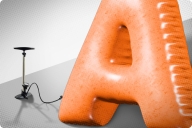You have /5 articles left.
Sign up for a free account or log in.
ATLANTA -- Don’t. Say. Liberal. Arts. But by all means, do preach the value of a “universal” education to anyone and everyone.
Smash the false dichotomy between that universal education and job-ready training, while you’re at it, rhetorically and via the curriculum. Give students the opportunity to practice what they’re learning in a real-world setting before they graduate. And throw in a well-earned credential along with their degree.
Those are all ideas pitched by speakers here Thursday during the opening plenary and additional sessions of the Association of American Colleges and Universities’ annual meeting. The AAC&U has long advocated for students of all backgrounds to get the broad educations that will prepare them for careers and not just first jobs, taught through evidence-based practices. To AAC&U leaders, that means taking general education seriously, not just as boxes to check.
In recent years, however, AAC&U also has focused on reclaiming the narrative on the value of higher education, which was, not coincidentally, this year’s meeting title. The plenary, meanwhile, was called “Code Switching: Making the Case for Liberal Education Amidst Critics, Skeptics and Trolls.”
It’s no secret that colleges and universities have a public perception problem, especially if you call them colleges and universities: people tend to associate them with Animal House or political indoctrination. Higher education, meanwhile, sounds more credible -- even though its confidence rating has declined significantly in the era of truthiness and fake news. That’s what the polls say, at least, said Brandon Busteed, president of Kaplan University Partners, formerly of Gallup. And if one gathered all the brightest minds in the marketing business, locked them in a room and told them to come up with the worst possible term for the kind of life-changing education that AAC&U promotes? It would probably be “liberal arts,” he said.
Why? Too few people understand what the liberal arts means, and instead think it refers to politics or art. Busteed said he didn’t pretend to have a far better term, but that “universal” education might be a start. “Soft skills” is another poorly chosen term for an important concept, he said.
“We have a marketing and branding problem,” he said. “Words can damage our case because there’s too much baggage around them.”
Beyond language, Busteed said research demonstrates that liberal arts graduates who had a job or internship in college that required them to apply what they were learning have postgraduation outcomes similar their peers in science, technology, engineering and math. That’s the “equalizing force” in an undergraduate education, he said. And institutions and the public alike need to stop seeing “careerism and the liberal arts as mutually exclusive.”
There’s widespread desire for more efficient, less expensive and more work-aligned pathways through college, Busteed added, “and we can make this happen in the liberal arts.”
Of course -- and to additional speakers’ points that institutions need to do a better job of telling their stories -- this kind of work is already happening in higher education.
At a session on bridging the liberal arts and business education, for example, institutions shared how they’ve blended preprofessional training with more universal themes. Melinda Zook, a professor of history at Purdue University and leader of its Cornerstone Integrated Liberal Arts program, discussed her Teagle Foundation-funded initiative: a 15-credit undergraduate certificate project focused in liberal arts disciplines for highly concentrated degree programs in engineering, management and nursing. First-year students in the program enroll in a two-semester sequence called Transformative Texts that uses a Great Books approach to engage students with what Teagle describes as "enduring questions" while building writing, research and presentation skills. Students then take 200- and 300-level courses organized into five themes, including science and technology, environment and sustainability, and management and organizations.
At the end of their studies, students get a certificate saying “Cornerstone Integrated Liberal Arts.”
Zook said following the session that she spends "a lot of time talking to employer groups about Cornerstone and to our preprofessional advisers who help our graduates with their applications to law and medical schools," so that they all understand what the certificate signals.
She added, "We want to make Cornerstone part of the Purdue brand for our STEM and management students." The idea is that these graduates "understand engineering or computer science or management, but they also have the communication, interpersonal and team-building skills and broader vision of the world that your typical liberal arts major has imbued."
Service learning is another way many institutions have tried to help their liberal arts students acquire some job-ready skills, practical and “soft,” however poor a term it is. Widener University, for example, is working with Project Pericles, a consortium of colleges and universities that promotes civic engagement, on an initiative in this area, Creating Curricular Coherence. This campus Sustainability and Civic Engagement thematic pathway involves high-impact teaching practices, starting with an interdisciplinary first-year seminar. Next is a is a series of general education gateway, pathway and linked syllabus courses designed by professors from different disciplines. Sustainability is a key concept. Community-based and problem-based courses, as well as study abroad at Widener's global hub in Costa Rica, all play a part.
Gail Mellow, president of LaGuardia Community College of the City University of New York, said that liberal education is alive and well at her institution, which has one of the biggest philosophy programs in the U.S. Her college enrolls students from 160 countries speaking 110 languages, she said, and many of them are driven by a desire that they can’t quite articulate -- to grapple with life’s big questions and ultimately lead a better existence. She urged those present to take teaching more seriously and to begin thinking about higher education, and, by extension, liberal education, as an “ecosystem,” in which most students will not attend a private, four-year institution.
Even nursing requires philosophical grounding, Mellow said, relaying a classroom incident in which a LaGuardia professor of nursing warned her students that they might see dead bodies during their training and then joked that dead bodies “can’t hurt you.” One student argued back that they indeed could, saying that in her home country corpses must be handled in a precise way to avoid that, Mellow recalled. The professor asked about other students’ cultural beliefs about death, and the conversation morphed from one about more basic nursing skills to one that would possibly inform the students’ ultimate success in their careers.
Mellow’s call to see higher education as an ecosystem was echoed by other speakers throughout the day. Some said that institutions and associations spend much time promoting themselves and not enough time promoting a clear set of contributions of higher education in general to society.
Mary Schmidt Campbell, president of Spelman College, said during the plenary that conversations about liberal education should be about what the liberal arts do “in our country for our conscience and our ideas.” Spelman was founded just about 20 years after the Civil War, and local women working as laundresses and in other similar positions saw it as a place where they could “profoundly change their lives.”
Spelman still holds that promise today, Campbell said, adding that it affords students “the innovation for them to think of themselves as scientists, as leaders.”









